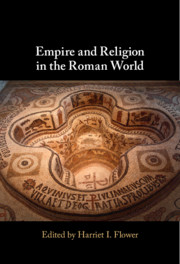Book contents
- Empire and Religion in the Roman World
- Empire and Religion in the Roman World
- Copyright page
- Frontispiece
- Contents
- Figures
- Table
- Contributors
- Acknowledgments
- Introduction
- Part I Empire
- Chapter 1 Germs and Empire
- Chapter 2 Imperial Integration on Rome’s Atlantic Rim
- Chapter 3 The Ambitions of Government
- Chapter 4 Contingency and Context
- Part II Religion
- Appendix: Bibliography of Brent D. Shaw’s Publications to 2020
- Index
- References
Chapter 2 - Imperial Integration on Rome’s Atlantic Rim
from Part I - Empire
Published online by Cambridge University Press: 26 August 2021
- Empire and Religion in the Roman World
- Empire and Religion in the Roman World
- Copyright page
- Frontispiece
- Contents
- Figures
- Table
- Contributors
- Acknowledgments
- Introduction
- Part I Empire
- Chapter 1 Germs and Empire
- Chapter 2 Imperial Integration on Rome’s Atlantic Rim
- Chapter 3 The Ambitions of Government
- Chapter 4 Contingency and Context
- Part II Religion
- Appendix: Bibliography of Brent D. Shaw’s Publications to 2020
- Index
- References
Summary
This chapter examines the impact of Roman imperial expansion on the Atlantic rim of the Roman empire, an “ecological frontier,” so the chapter argues, that traced a natural arc encompassing southern Ireland, southwest Britain, the whole Atlantic coast of Gaul from the Cherbourg Peninsula to the Pyrénées, most of the Iberian Peninsula, and the far northwestern corner of the African continent. A set of case studies illustrates how the territories, resources, and peoples of this ecological frontier zone were integrated into a Roman imperial system centered on the Mediterranean basin. The chapter argues that this Atlantic rim was integrated in a highly differentiated way that not only shattered a preexisting Atlantic world that had been bounded and unified, but also reordered its constituent parts in the service of empire. The chapter’s central thesis, seemingly paradoxical, is that imperial integration and regional fragmentation went together.
- Type
- Chapter
- Information
- Empire and Religion in the Roman World , pp. 35 - 70Publisher: Cambridge University PressPrint publication year: 2021
References
- 1
- Cited by



